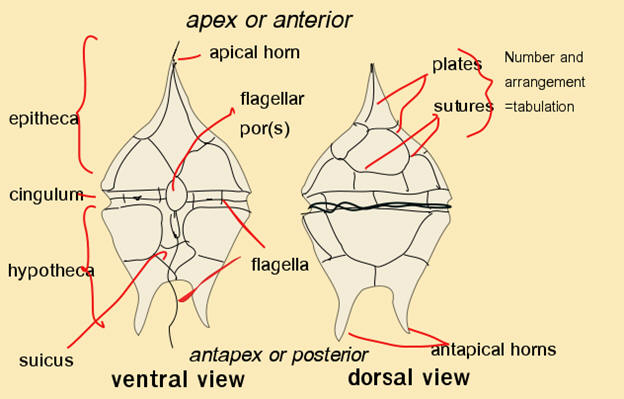Adaptation
Throughout evolution Dinoflagellates also improved their structural support. They developed cellulose plates that now sit underneath their membranes. These cellulose plates allow for added support and protection in marine environments. These structural improvements are depicted below. They also developed two flagella. These flagella aid in locomotion which will help the organism to move throughout its habitat and also to move to find nutrients.

Wikipedia Commons:
Salvor Gissurardottir
All organisms adapt over time to better live in their environments. In the case of Alexandrium tamarense they adapted the ability to become cysts. They can become cysts when conditions are not ideal, for example changes in salinity or temperature. The resting cyst stage can last for as long as the conditions remain hectic and can end when the conditions become favorable again for that organism.
Alexandrium tamarense produce a toxin called saxitoxin, that is deadly in potent concentrations (for more information on this click here!). This is also a major adaptation of Alexandrium tamarense! It produces saxitoxin as a survival mechanism! Believe it or not many organisms try to feed on this microscopic algae even though it is proven to be parasitic. A. tamarense produces this toxin to ward off organisms from feeding on it. Talk about extreme measures to keep yourself safe.
Next Stop: Nutrition!